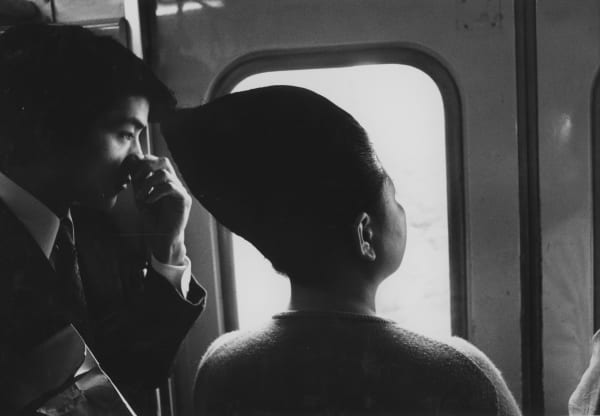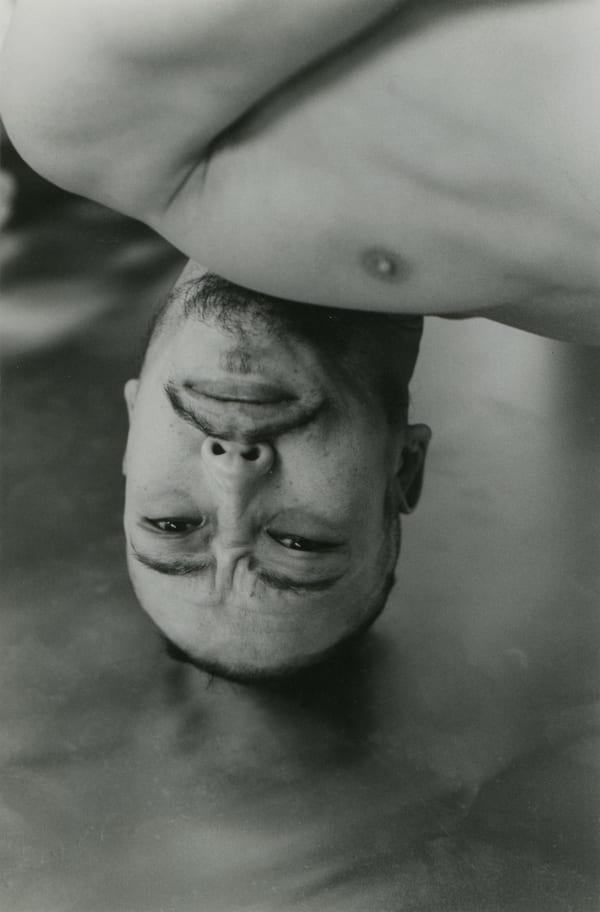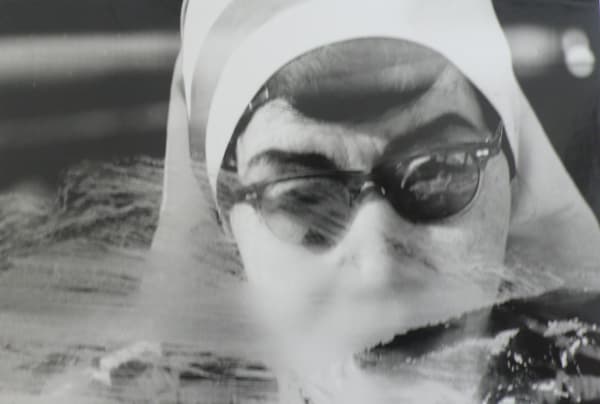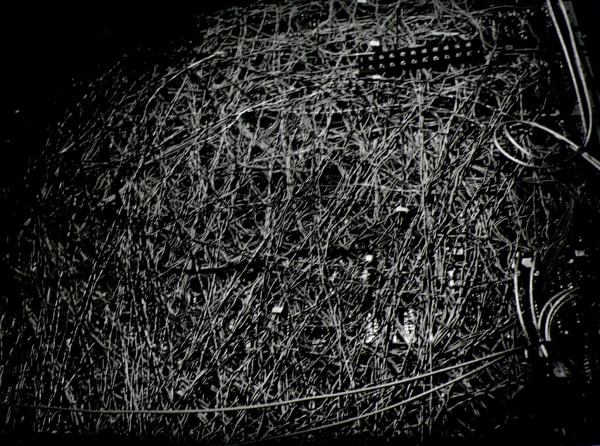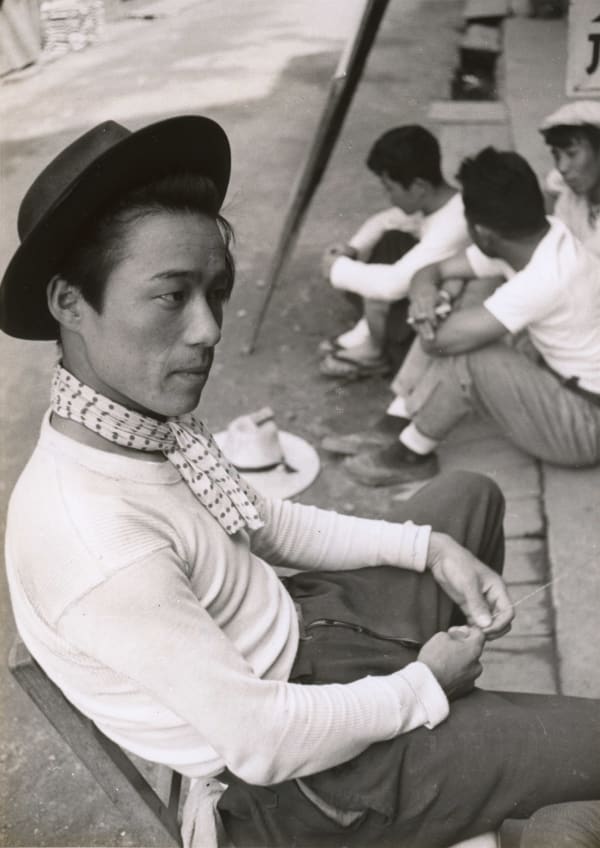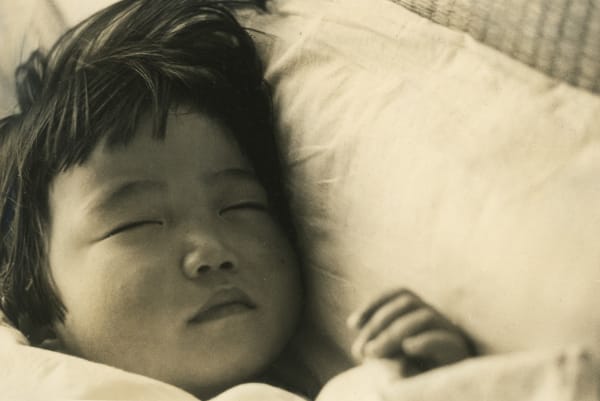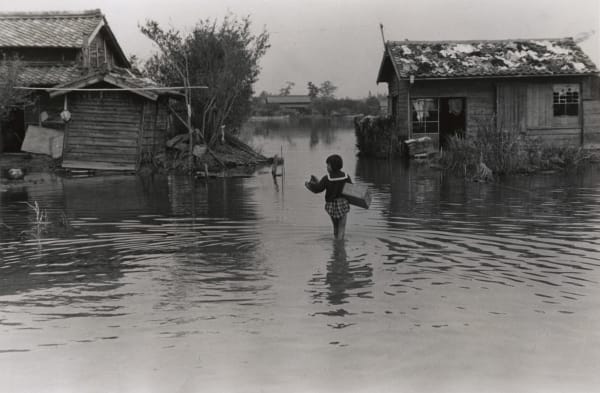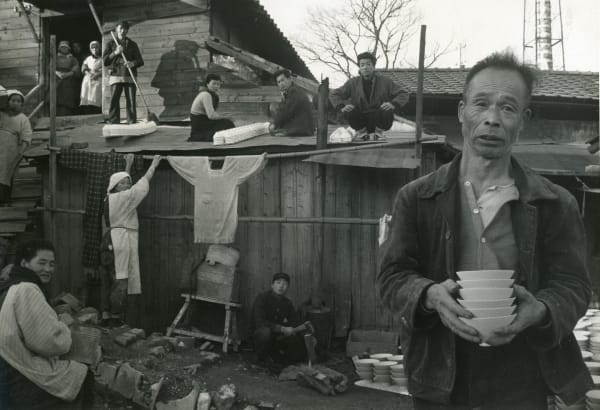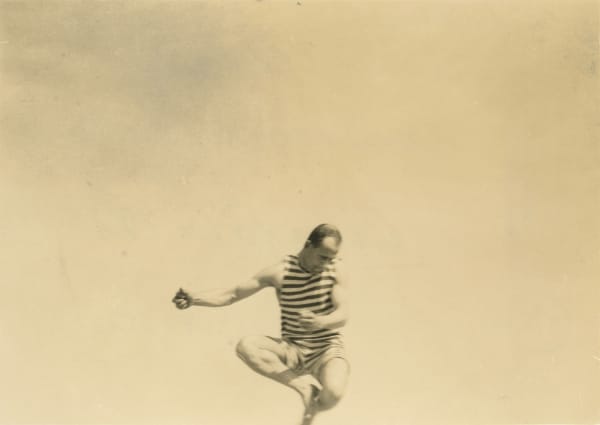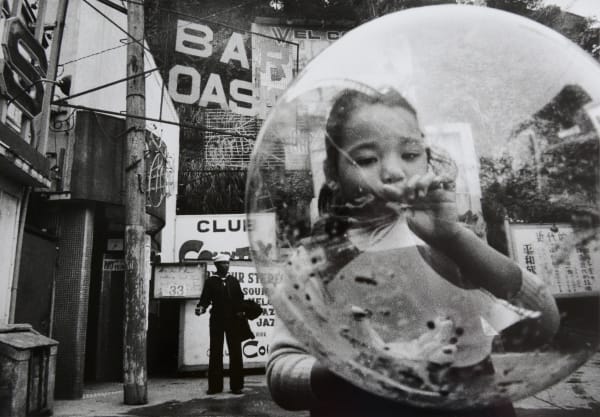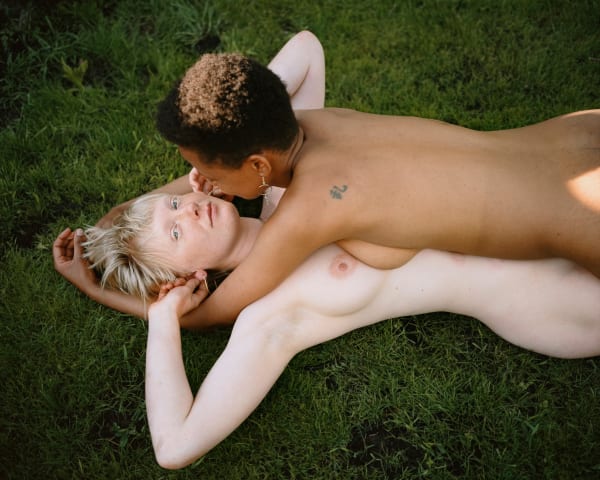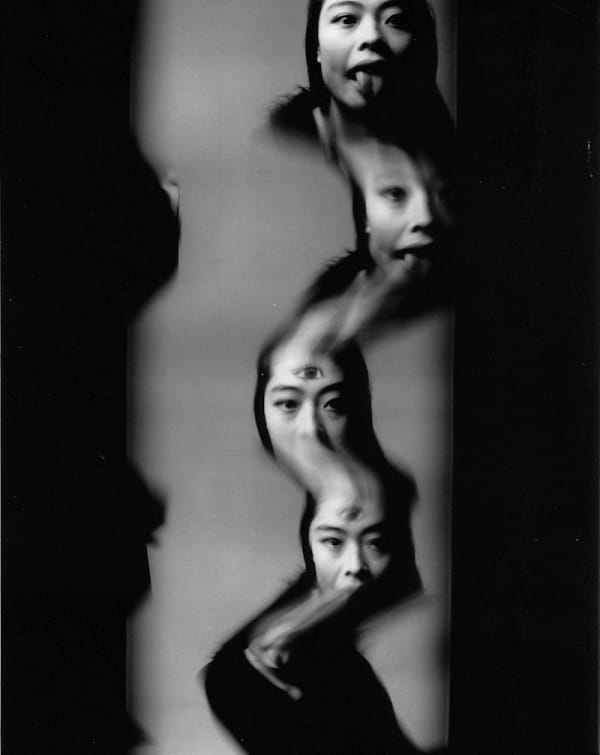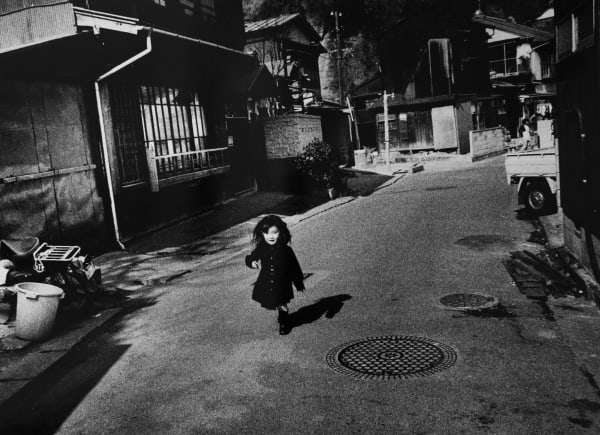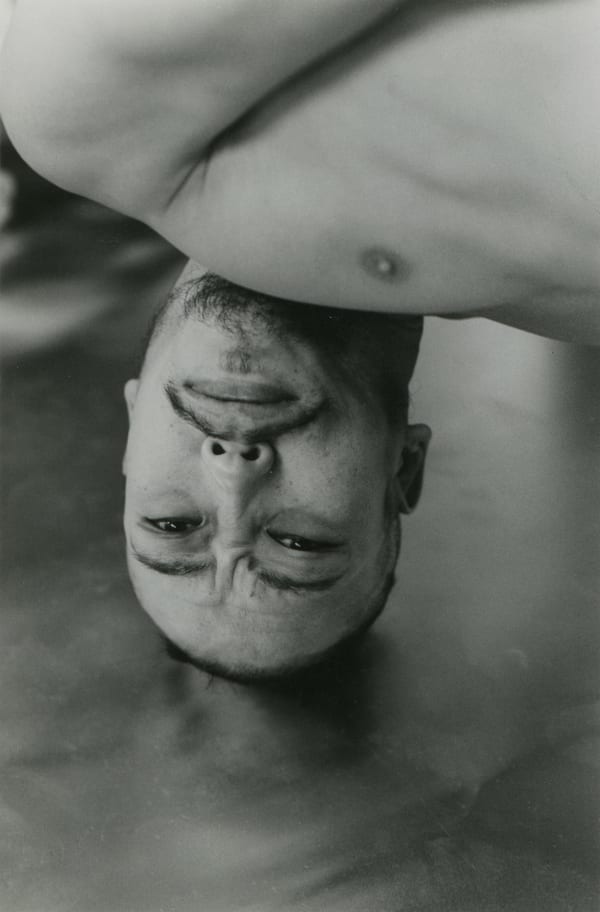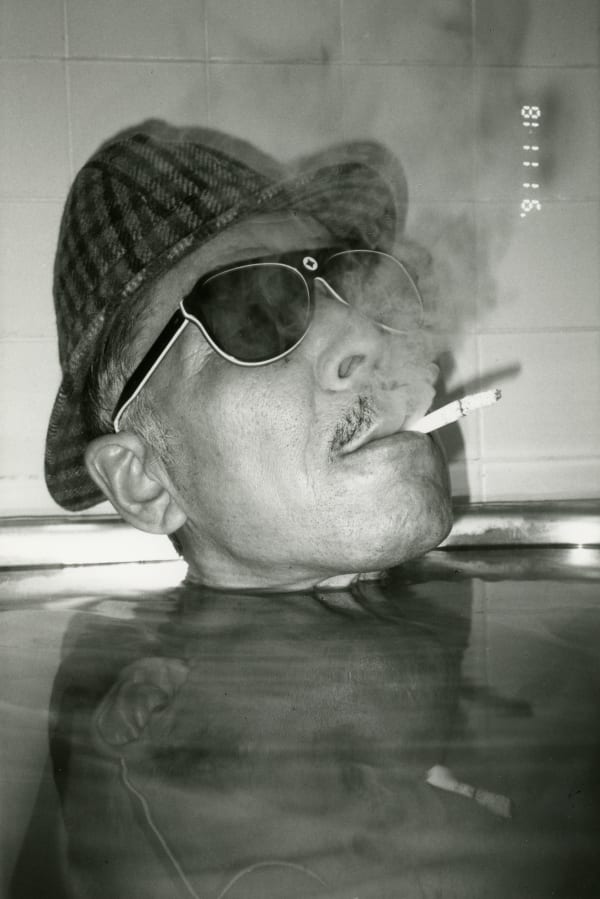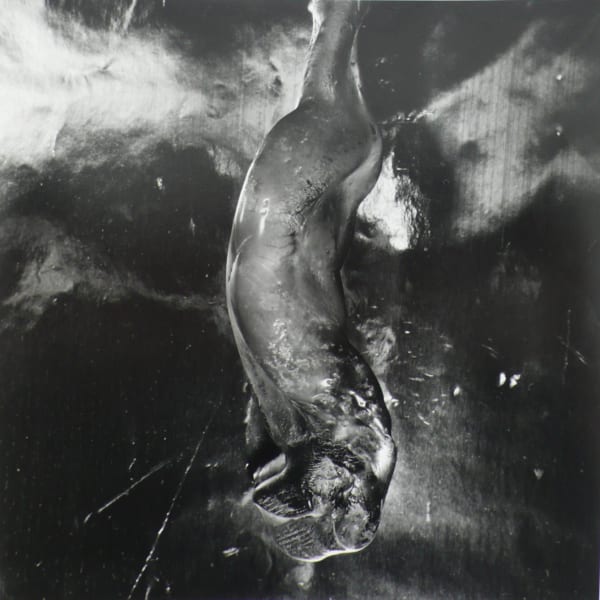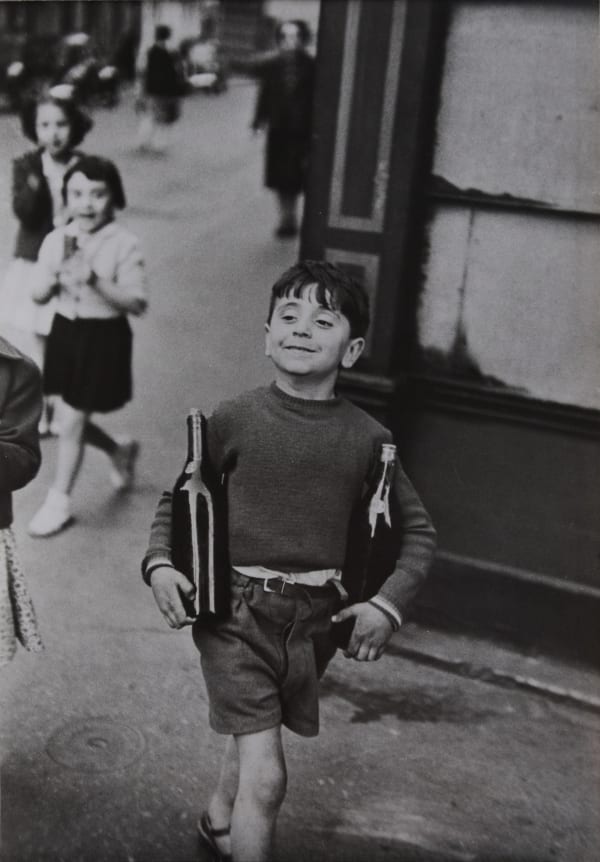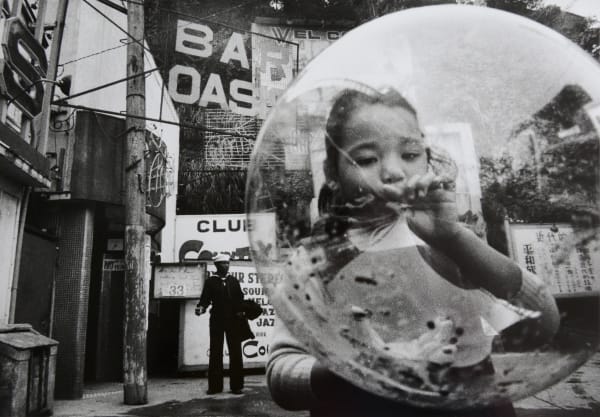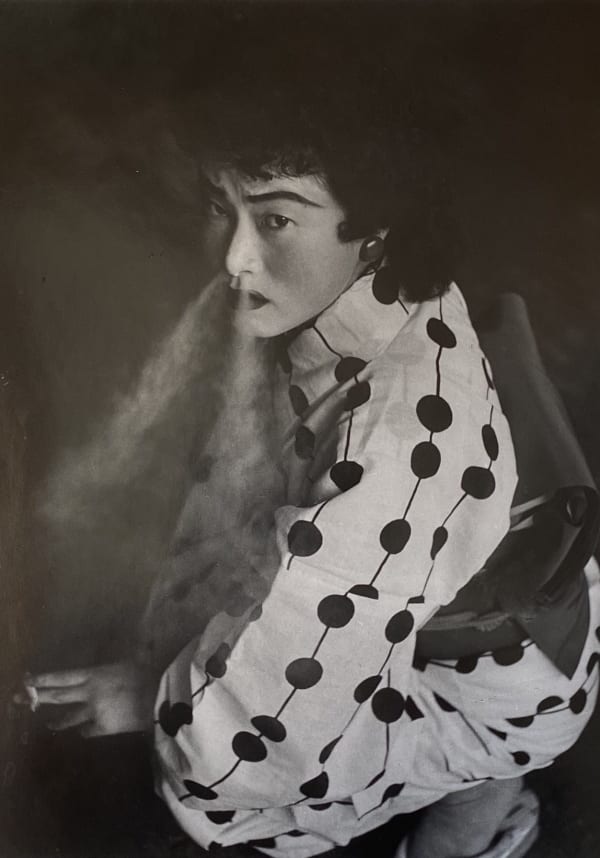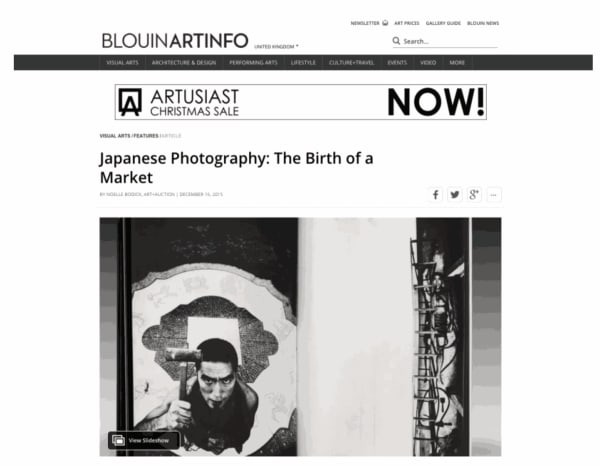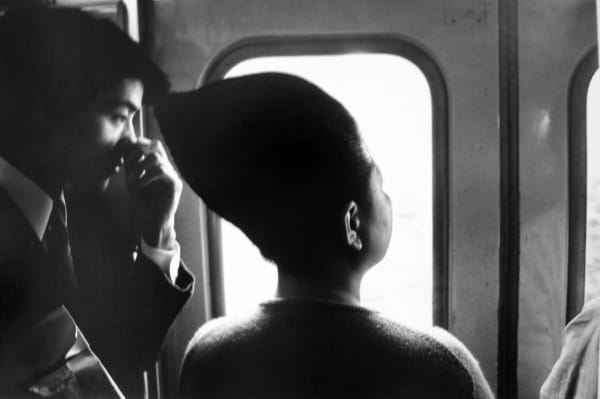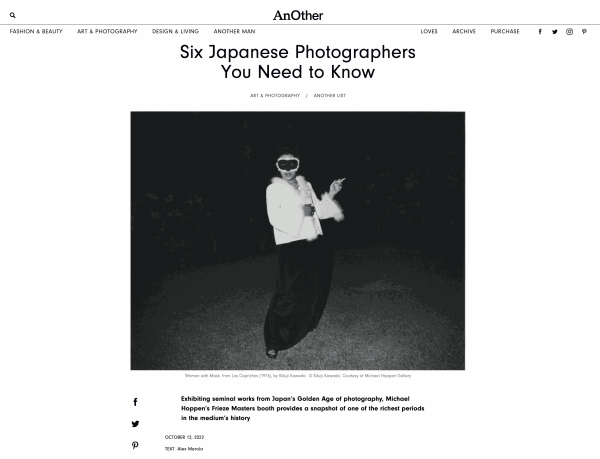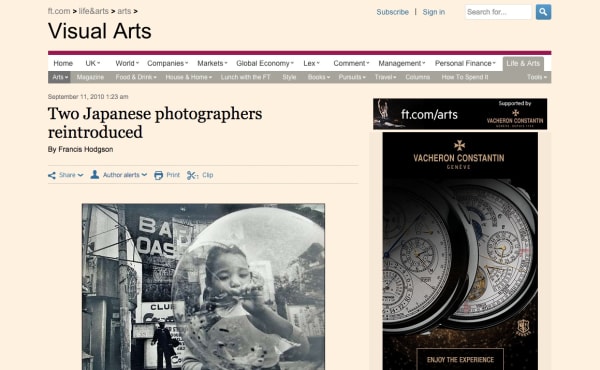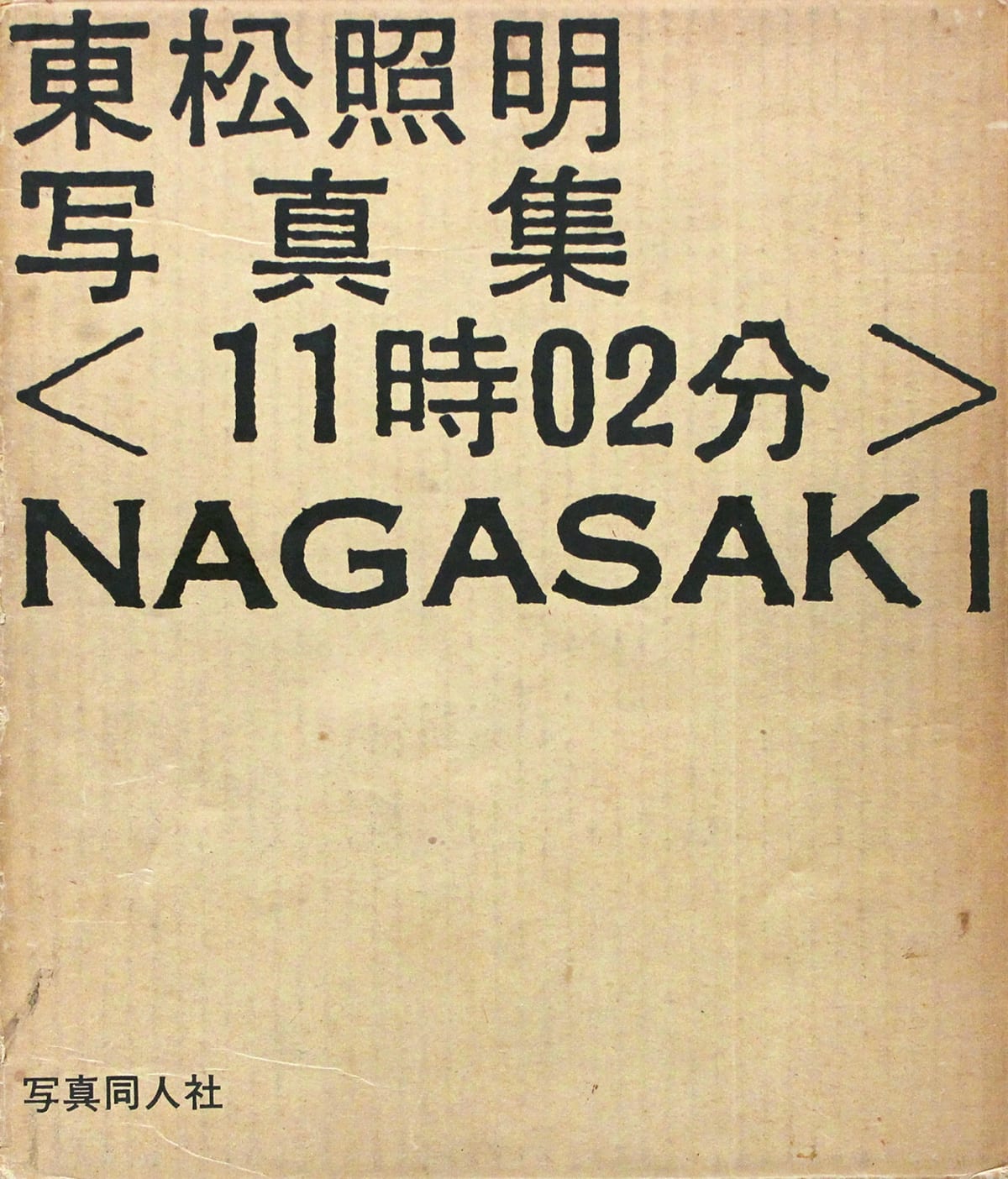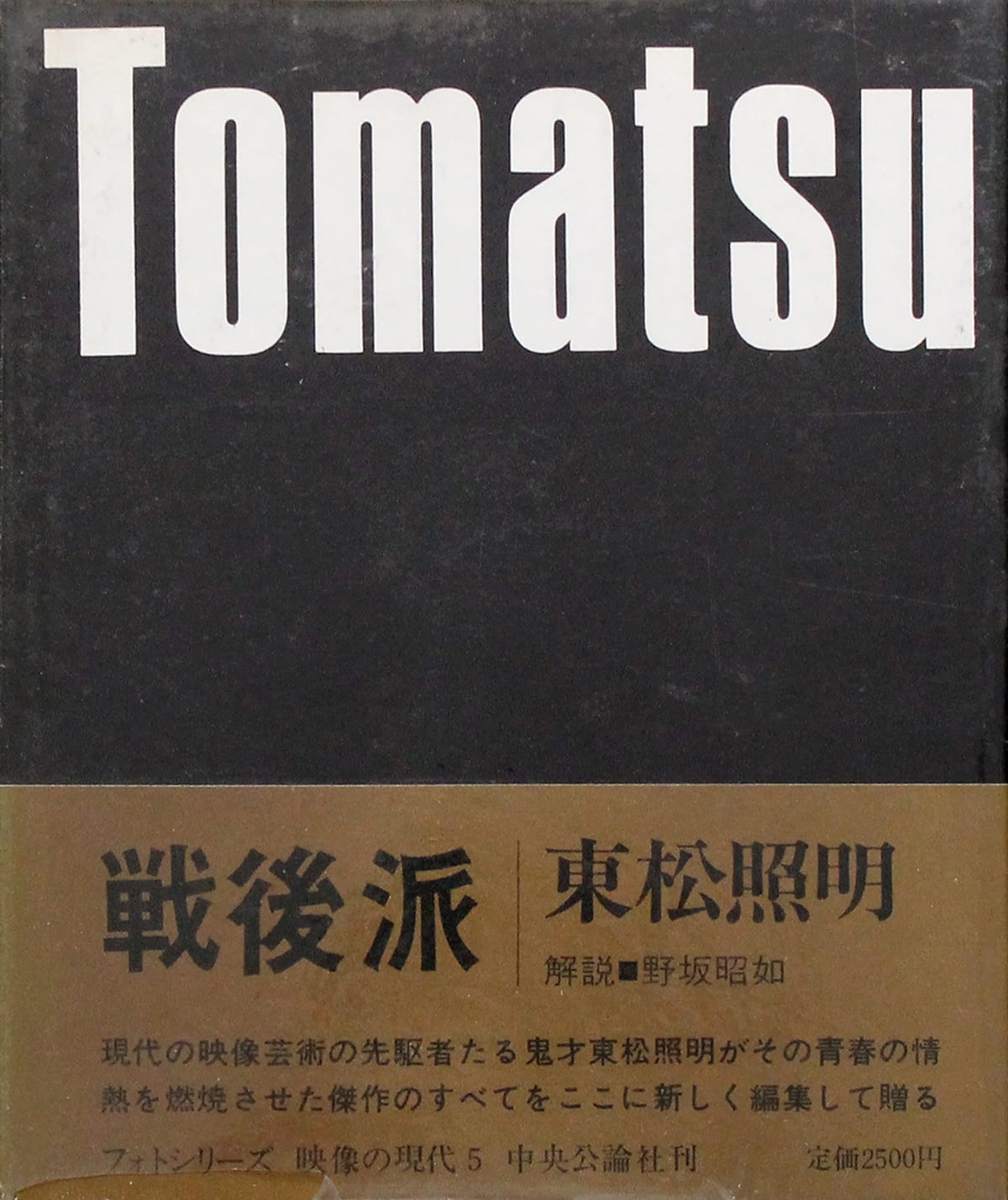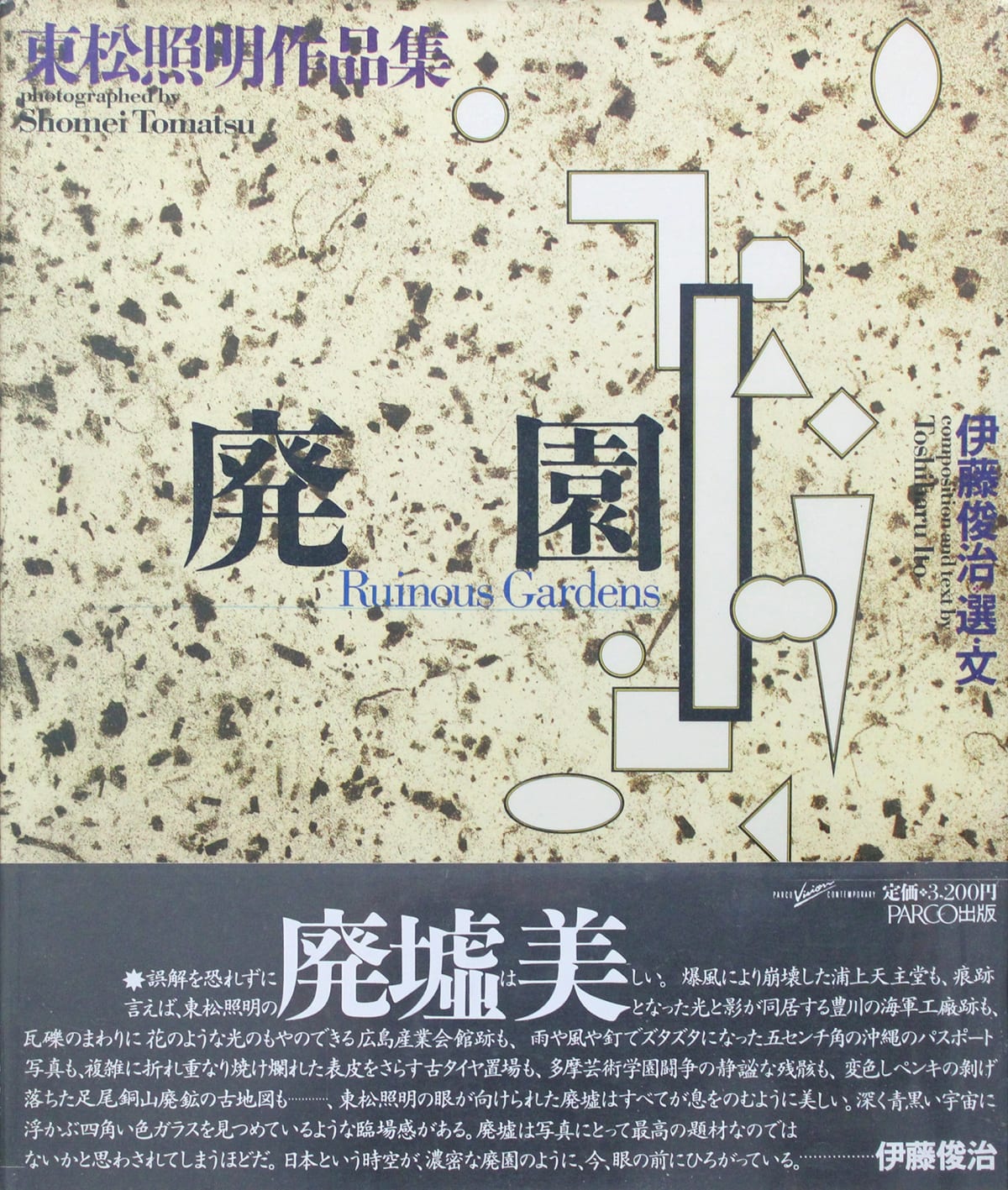-
 Chewing Gum and Chocolate No. 25, Yokosuka, Kanagawa, 1967
Chewing Gum and Chocolate No. 25, Yokosuka, Kanagawa, 1967 -
 Subway, Tokyo, 1969
Subway, Tokyo, 1969 -
 Blood and Roses, Butoh Dancer Akaji Maro, Shinjuku, Tokyo, 1969
Blood and Roses, Butoh Dancer Akaji Maro, Shinjuku, Tokyo, 1969 -
 Chitose, Hokkaido, from Chewing Gum and Chocolate, 1959
Chitose, Hokkaido, from Chewing Gum and Chocolate, 1959 -
 Untitled, from the series Chewing Gum and Chocolate, 1958
Untitled, from the series Chewing Gum and Chocolate, 1958 -
 Untitled, from the series Chewing Gum and Chocolate, 1978
Untitled, from the series Chewing Gum and Chocolate, 1978 -
 Computer, 1968
Computer, 1968 -
 Floods and the Japanese 17, Issiki-cho, Aichi, 1954
Floods and the Japanese 17, Issiki-cho, Aichi, 1954 -
 Educating children in a healthy environment, c. 1955
Educating children in a healthy environment, c. 1955 -
 Children are all so beautiful, c. 1955
Children are all so beautiful, c. 1955 -
 A man lays sick due to lack of medical support post war, c. 1955
A man lays sick due to lack of medical support post war, c. 1955 -
 Children help with the family business,Seto, 1954
Children help with the family business,Seto, 1954 -
 On her way back home with box, c. 1955
On her way back home with box, c. 1955 -
 Pottery Town, Seto, Aichi, 1954
Pottery Town, Seto, Aichi, 1954
Shōmei Tōmatsu has been praised as the greatest and most influential photographer to have emerged out of Japan’s turbulent post-war generation. His raw, grainy and impressionistic style signalled a dramatic break with the quiet formalism and photojournalism that had defined earlier photography. Influencing the anti-establishment Provoke photography movement in Japan in the late 1960s, he is hailed as the stylistic mentor of artists such as Daidō Moriyama, Nobuyoshi Araki and Takuma Nakahira.
TOMATSU IS THE PIVOTAL FIGURE OF RECENT JAPANESE PHOTOGRAPHY, HIS IMAGES ARE AN INTUITIVE RESPONSE TO THE EXPERIENCE OF LIFE ITSELF.
- John Szarkowski
Tōmatsu first began to take photographs to document the student protests, which he supported during his time studying economics at Aichi University, as a member of the All-Japan Student Photography League. Upon graduation, Tōmatsu joined the production staff working on Iwanami Shoten’s influential Photography Library series. He participated in the Eyes of Ten exhibition in Tokyo, and recognition soon followed in the form of the Japan Photo Critics Association prize in 1957 and the Mainichi Photography Award in 1959.
Tōmatsu’s photography has persistently found new ways to articulate the lingering traces of American influence which he perceived across Japan. His 1960 series Occupation, documented Americanization in Japanese cities whilst Hiroshima-Nagasaki Document 1961, ranks amongst the earliest attempts authorised to record the nuclear devastation from within the restricted zone. Tōmatsu also returned again and again to photograph the changing face of Okinawa, Japan’s southern-most archipelago, which remained an American colony until 1974.
Major solo exhibitions have been held in Tōmatsu’s honour at institutions including the San Francisco Museum of Modern Art, the Tokyo Metropolitan Museum of Photography, and the Art Institute of Chicago. His work is held in the permanent collections of prestigious institutions including the Museum of Modern Art, New York, the J. Paul Getty Museum, Los Angeles, the Metropolitan Museum of Art, New York, and the Pompidou Centre, Paris.
Among his major awards are the Japan Photo Critics Association Newcomer’s Award (1958), the Japan Photo Critics Association Artist Award (1961), the Mainichi Art Award (1976), The Minister of Education, Science and Culture’s Art Encouragement Prize (1976), The Medal with Purple Ribbon (1995) and The Photographic Society of Japan Distinguished Contributions Award (2005).
-

AIPAD | The Photography Show
Park Avenue Armory, New York City 23 - 27 Apr 2025Read more -

Paris Photo 2024
Grand Palais, 7 avenue Winston Churchill, 75008, Paris, France 7 - 10 Nov 2024We will exhibit rare vintage photographs by artists including Dora Maar, László Moholy-Nagy, Man Ray, Horacio Coppola, Kansuke Yamamoto and Kati Horna to honour the 100th anniversary of the Surrealist...Read more -

Firsts
London's Rare Book Fair 16 - 19 May 2024Michael Hoppen is delighted to participate in Firsts , London’s foremost rare book fair! Presenting an eclectic selection spanning unique photographic albums, limited edition artist books, rare portfolios, and other...Read more -

The Photography Show, AIPAD
Center 415 • Stand 225 30 Mar - 2 Apr 2023Upcoming photography fair in New York CityRead more -

Frieze Masters 2022
Regent's Park • Stand A08 12 - 16 Oct 2022At Frieze Masters 2022, we are delighted to be exhibiting key works by members of the iconic generation of Japanese photographers who rose to prominence during the post-war period. The...Read more -

Paris Photo 2021
Grand Palais Éphémère • Stand D24 10 - 14 Nov 2021We are absolutely delighted to be returning to Paris Photo 2021 after our forced absence from art fairs - but especially Paris Photo which we have participated in for the...Read more -

AIPAD, NEW YORK
BOOTH 603 4 Apr - 7 Mar 2019BOOTH 603 Exhibited Artists: Nobuyoshi Araki Peter Beard Guy Bourdin Siân Davey Eamonn Doyle Masahisa Fukase Fergus Greer Chiero (Count Louis Hamon) Eikoh Hosoe Ishiuchi Miyako Sarah Moon Daido Moriyama...Read more -

Shashin: are-bure-boke
14 Sep - 16 Nov 2018An exhibition of Japanese photographic mastersRead more -

PHOTO LONDON 2018
SOMERSET HOUSE 17 - 20 May 2018A brief look at what Michael Hoppen Gallery will be presenting at Somerset HouseRead more -

PARIS PHOTO 2017
Grand Palais • Booth C10 9 - 12 Nov 2017Michael Hoppen Gallery will be at Paris Photo, 2017, booth C10.Read more -

Paris Photo
GRAND PALAIS • BOOTH C10 12 - 15 Nov 2015The Michael Hoppen Gallery list of artists to be exhibited at Paris Photo 2015.Read more -

AIPAD 2015
New York 16 - 18 Apr 2015Art Fair, New York, London, Art, April, ContemporaryRead more -

Shomei Tomatsu & Daido Moriyama
10 Sep - 10 Oct 2010Two of the great Japanese photographers hung side by side.Read more
-

Summer Newsletter 2023
August 3, 2023It’s the summer, time to look forward to some lazy days, but also to a busy autumn which will soon be upon us. As you...Read more -

The Photography Show presented by AIPAD 2023
Michael Hoppen's Highlights March 21, 2023Michael Hoppen Gallery is pleased to return to AIPAD, New York, this year with an exceptional group of vintage prints. Each one has a story...Read more -

Frieze Masters 2022
Michael Hoppen's Highlights October 10, 2022Michael Hoppen Gallery is delighted to be exhibiting at Frieze Masters 2022, with key works by members of the iconic generation of Japanese photographers who...Read more -

Paris Photo 2021
Michael Hoppen's Highlights November 5, 2021Michael Hoppen Gallery is delighted to be returning to Paris Photo 2021 after our forced absence from art fairs – but especially Paris Photo which...Read more -

The Eye Viewing Room
May 12, 2020Michael Hoppen Gallery presents master works by Bill Brandt, Dora Maar and Shōmei Tōmatsu in The Eye Viewing Room The Eye Viewing Room precedes the...Read more -

MASTERS OF JAPANESE PHOTOGRAPHY
Sainsbury Centre exhibition 11 Nov - 19 Mar, 2017Sainsbury centre in Norwich has opened a remarkable exhibition showcasing Japanese photography. Many of the works are available at Michael Hoppen Gallery.Read more -

Japanese Photography: The Birth of a Market
Michael Hoppen talks to Blouin Art Info December 16, 2015Michael Hoppen talks to press about the Japanese photography and our long term partnership with many of the greatest post-war photographers.Read more -

SHOMEI TOMATSU
Aipad 2015: Featured Artist April 13, 2015Press images, Classic vintage prints. The story of on of Japans great photographers. Aipad Photo fair, New YorkRead more

